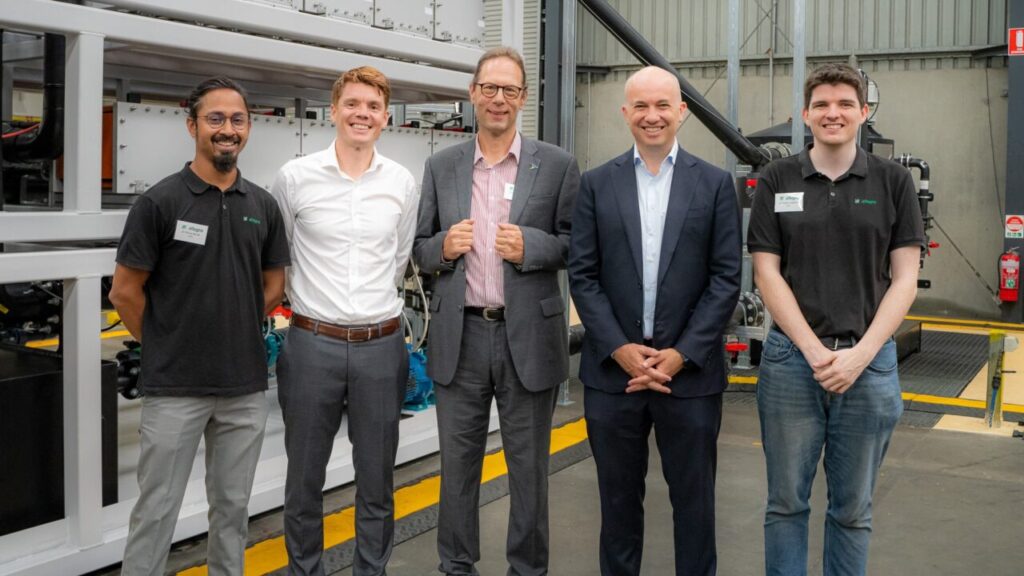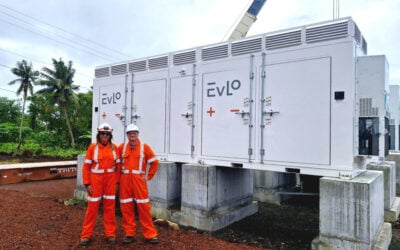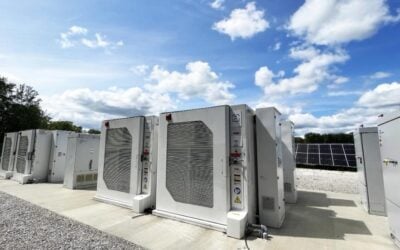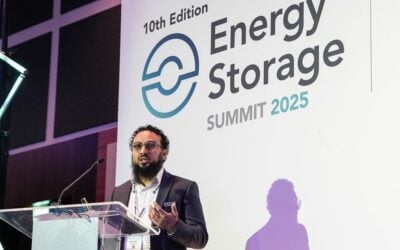
Allegro Energy, an Australian-based developer of water-based redox flow battery energy storage solutions, has revealed what it claims is Australia’s first locally manufactured microemulsion flow battery (MeFB) suited for long-duration energy storage (LDES).
The developer, backed by Origin Energy, Melt Ventures, and Impact Ventures, confirmed the technology, a type of redox flow battery, would soon debut at Origin’s Eraring Power Station, a black coal-fired plant in New South Wales. The plant is also home to one of the country’s largest battery energy storage system (BESS) developments.
Enjoy 12 months of exclusive analysis
- Regular insight and analysis of the industry’s biggest developments
- In-depth interviews with the industry’s leading figures
- Annual digital subscription to the PV Tech Power journal
- Discounts on Solar Media’s portfolio of events, in-person and virtual
Or continue reading this article for free
Origin Energy, a leading Australian utility company, acquired a 5% equity interest in Newcastle-based Allegro in 2023, citing the technology as “very promising.” Under the agreement, the utility would house a 100kW/800kWh MeFB trial. This could then be scaled to reach 5MW/60MWh in the future.
Allegro showcased the new technology via an open day last week after it secured a US patent for the technology.
Dr Thomas Naan, CEO and co-founder of Allegro Energy, said the technology shows how Australia can leverage advanced manufacturing to stand out in the global market.
“This battery represents breakthrough chemistry that can support the clean energy transition in Australia and globally,” Dr Naan added.
Allegro Energy makes water-based redox flow batteries and supercapacitors, which contain no scarce materials and include fully recyclable components.
These integrate a water-based electrolyte, which makes energy storage less expensive and safer. The company said this “opens up the ability to address needs at a global scale”.
According to the Australian government, Allegro’s technology is well-suited to the LDES market, which it anticipates being worth more than AU$3 trillion (US$1.87 million) globally by 2040. This saw the government provide AU$1.85 million in funding to help the developer scale up its technology earlier this year.
For Origin Energy, Allegro’s technology will add to the group’s growing battery portfolio. The company hopes that a successful trial at Eraring will spearhead further rollout to customer sites.
“We firmly believe that battery storage—including long-duration storage—will play a pivotal role in Australia’s energy transition, which is why we are building a significant battery portfolio,” said James Magill, executive general manager of Origin Zero, a specialised business unit within Origin Energy dedicated to supporting businesses with their energy needs.
The potential of flow batteries in the energy storage space
Flow batteries have continued to be a central discussion point for energy storage in recent months.
Indeed, earlier this month at our publisher, Solar Media’s Energy Storage Summit Australia 2025, Carl Christiansen, associate director of business development & transactions for the Australian Renewable Energy Agency (ARENA), highlighted the rise of flow batteries, particularly vanadium, in the country.
“We’ve seen a whole lot of flow batteries in our time. We did support a 2MW vanadium flow battery in South Australia, and that’s now commissioned and operational. There are a lot of vanadium players in the Australian market,” Christiansen said.
Vanadium has seen a surge in appeal in Western Australia, particularly following the completion of an electrolyte factory for vanadium redox flow batteries (VRFB).
Elsewhere, yesterday Energy-Storage.news reported that Sumitomo Electric Industries had received an order for a grid-scale 2MW/8MWh VRFB from Shin-Idemitsu. The asset will help stabilise the electricity grid on the southern Japanese island of Kyushu.
Despite the potential flow batteries pose to the global market, they are not without their difficulties. Last year, Australian zinc-bromide flow battery manufacturer Redflow ceased operations, with administrators unable to find a buyer. This was after the company failed to raise enough equity to fund a strategic plan.
Meanwhile, ESN Premium subscribers can read our piece published yesterday on the journey to commercialisation for two US-headquartered flow battery startups with novel electrolyte chemistries: XL Batteries, which uses an organic chemistry based on a red pigment dissolved in water and Quino Energy, which uses a water-based electrolyte.






